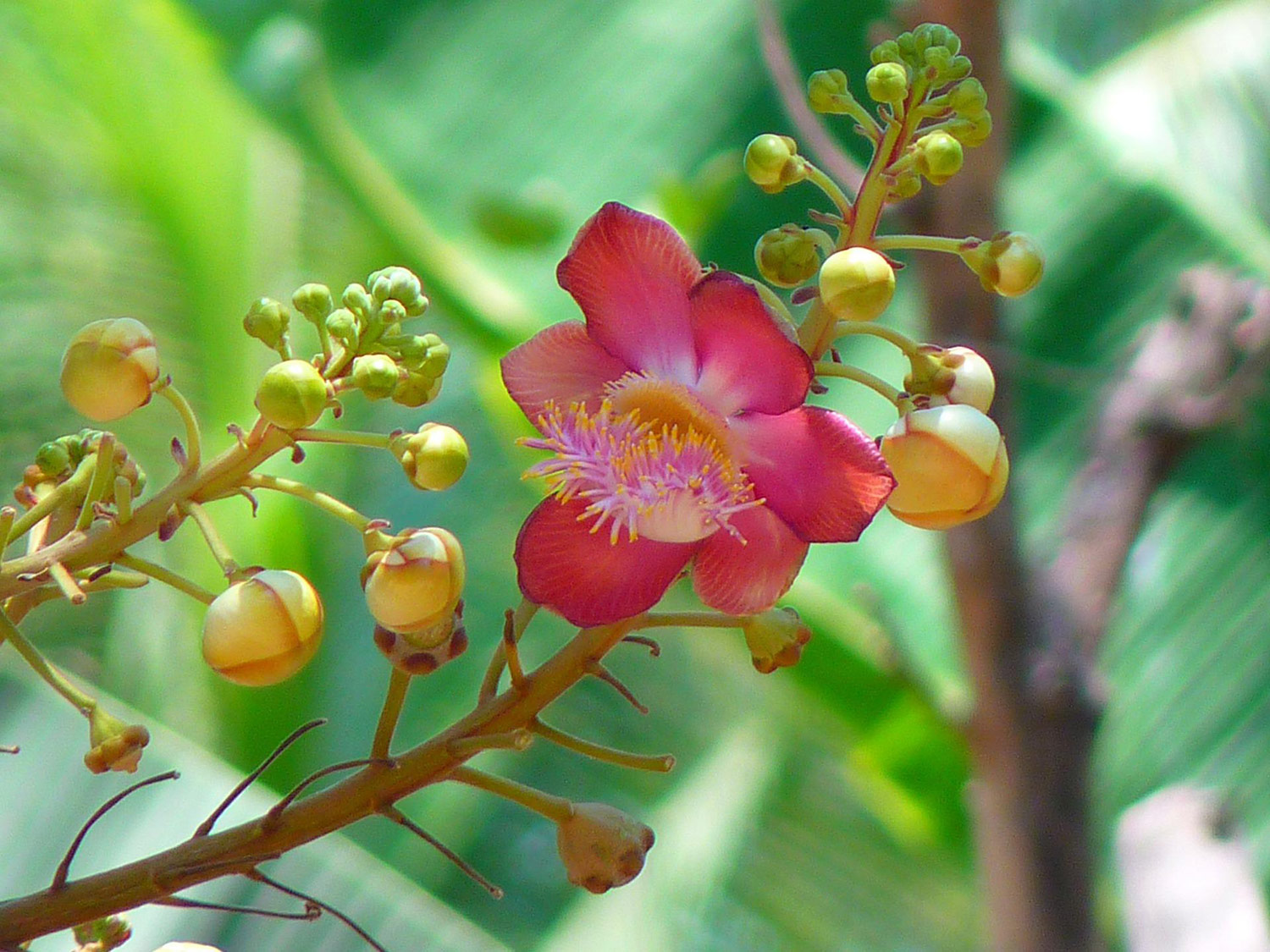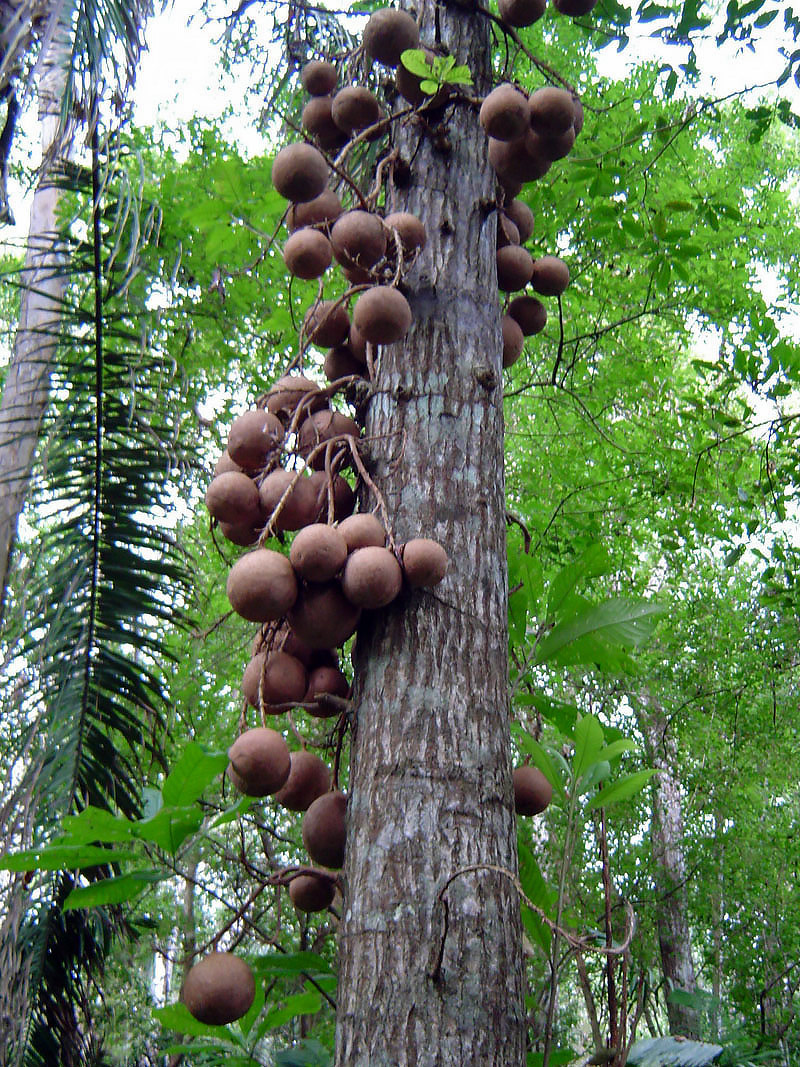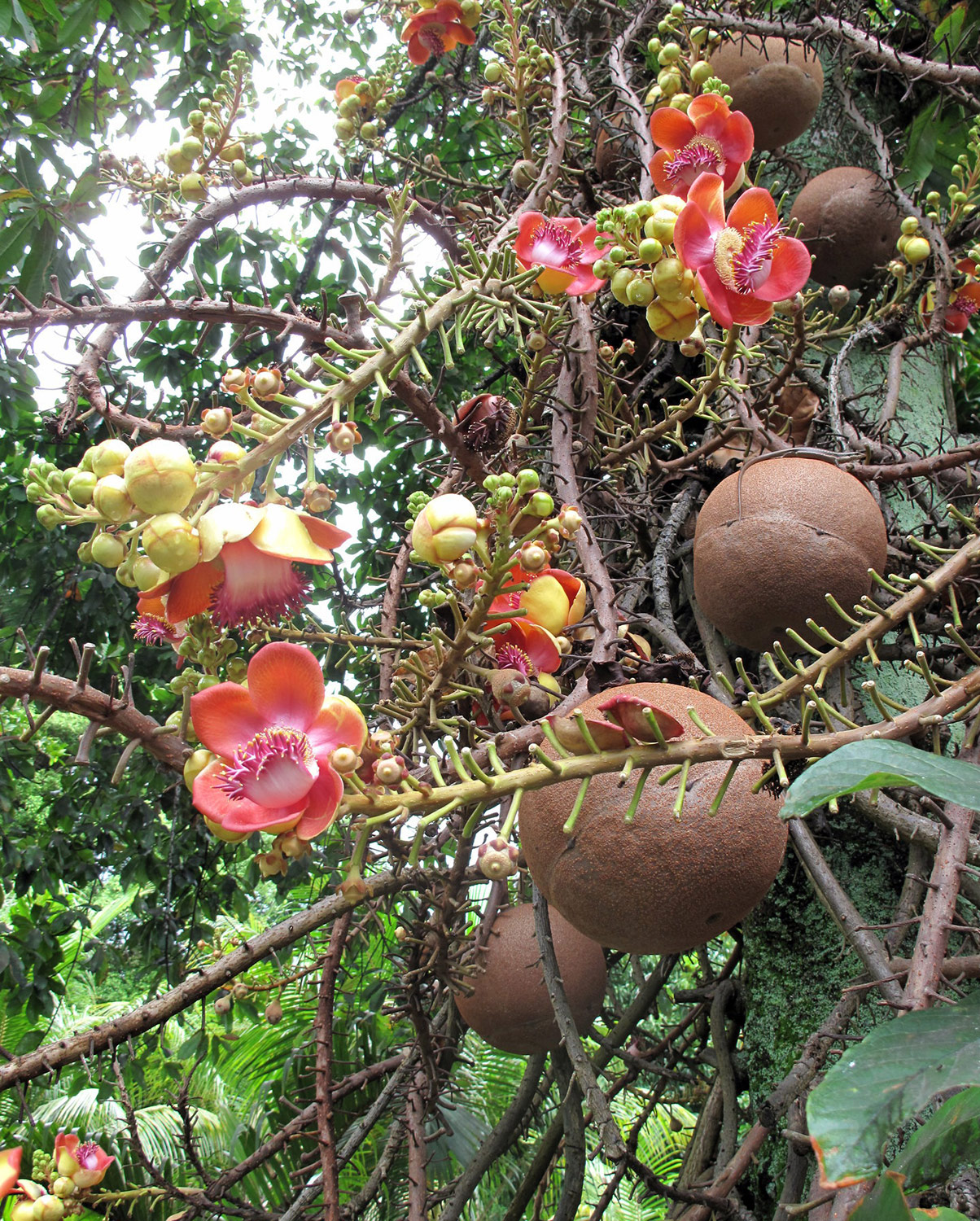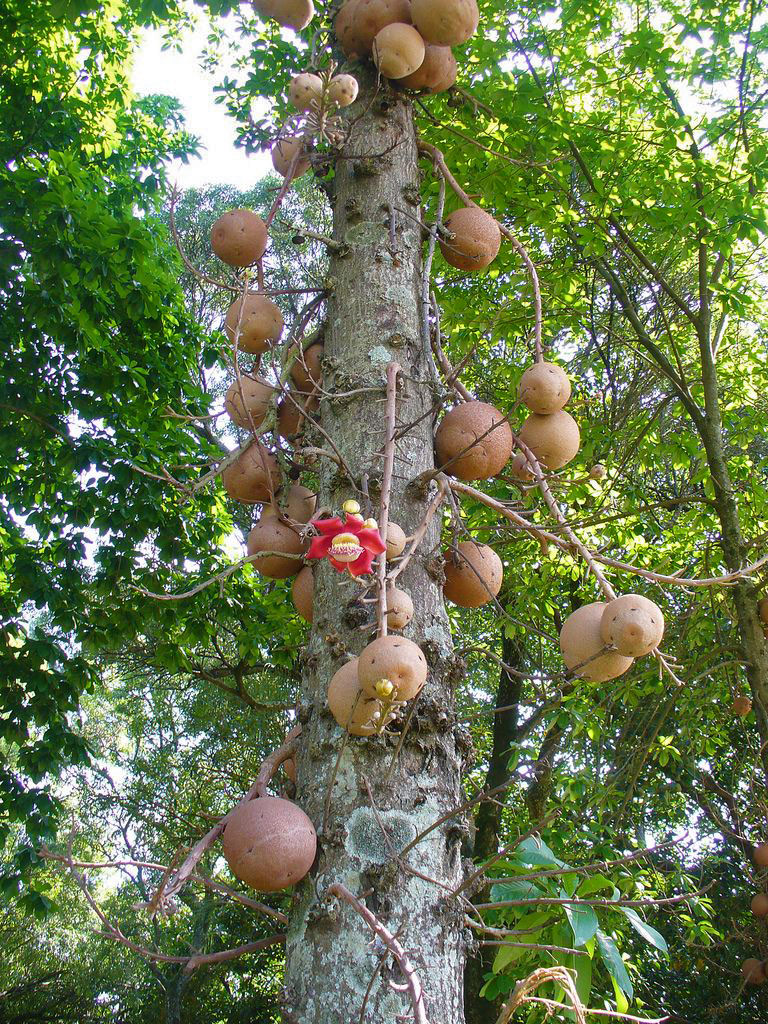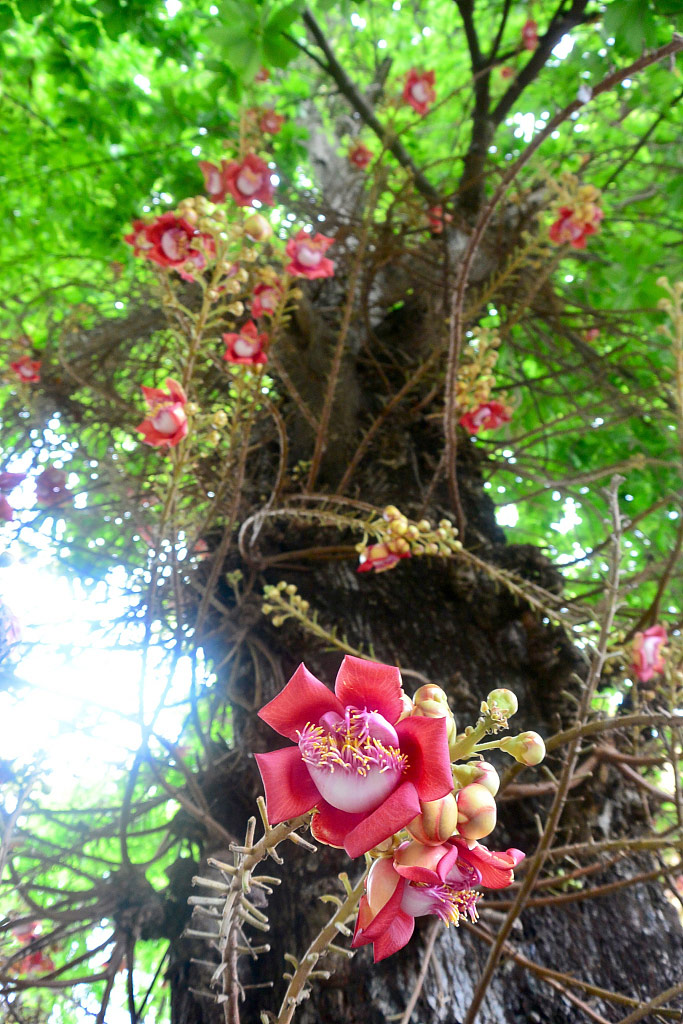Just like magic: healing trees in UNI RAO
In Peru, it’s summer, the rainy season, again. Ordinary life is almost paralyzed. On the other hand, this is the best time for people of knowledge – shamans, kuranderos and healers. They know how to spend this season profitably – not only for themselves and their health, but also for their tribe and patients.
For healers, summer in the jungle usually goes like this: stepping away from everyday bustle and worries, shamans hide in a secluded tambo. It is a small house in the forest, usually having only a roof and dirt floor. Getting comfortable on a bed under a mosquitera, a canopy of dense fabric that protects against insects, they can isolate themselves from the world of people and dive into the world of «plant medicine». Rains are the best time for dieting using plants such as Ayahuma. It has a gentle effect on the body, but requires from the student full self-giving without distraction to the everyday routine.
Ayahuma, or “cannonball tree” (Lat. Couroupita guianensis) is an evergreen tree that grows in the Amazon selva region, which is traditionally used in medicine by local tribes. It belongs to the same Lecythidaceae family as the Brazilian nut, one of the largest plants of the selva. Both species have the same range in the Peruvian Amazon, the tropical north of South America, Central America, and the southern Caribbean – but it is important to remember that these are two different trees. By the way, Couroupita is also found in Asia. In India, it is often confused with the sal tree (Lat. Shorea robusta), which Hindus and Buddhists consider sacred – according to one of the legends, under this tree Gautama Buddha was born.
However, the Brazilian nut and sal tree are still slightly taller than the Ayahuma tree: they can reach 35-40 meters, while the height of the cannonball tree is usually 20 to 35 meters. The leaves of the Couroupita guianensis are regular, lancet-shaped, fuzzy on the down side. They are twisted at the ends of the branches. The most exotic part of the plant is the flowers. They are arranged in an unusual way: not on branches, but on special vines that depart from the central trunk. Flower petals are large, bright, scarlet or pink shade, stamens look like fluffy fringe. A blooming Ayahuma exudes a wonderful aroma and looks very spectacular: the length of the inflorescences can reach three meters! They produce long globular fruits, 15-24 cm in diameter, with a solid shell. Inside the shell is a jelly-like pulp with a lot of seeds (about three hundred per large nut). When opening the nut, the pulp oxidizes and turns blue, quickly acquiring an unpleasant smell. For this reason, the tree is also called “stinking coconut”.
Bees and bats pollinate Ayahumas in the selva. The plant has difficulties with reproduction through seeds: they have a short germination period, do not tolerate cold temperatures and dry out easily.
The famous coconut palm Cocos nucifera and Ayahuma are similar not only to the shape of nuts, but also to the ability to drop their fruit at the most unexpected moment. Therefore, both trees are never planted along roads or near paths.
It is good that Couroupita nuts grow at a lower height than coconuts, and also close to the trunk – so the probability of an accident is much less. But the fall of the fruit in any case scares witnesses: when the shell splits, the crack is compared by some people to cannon fire. That’s why Ayahuma is called “cannonball tree”.
In terms of traditional medicine, Ayahuma is a truly wonderful plant with incredible power and unique properties. In the Amazon, this tree is venerated as a “plant teacher”. The Selva indigenous peoples, primarily the Shipibo-Konibo shaman tribes and the Ashaninka Indians of Ukayali, use the Ayahuma not only to acquire knowledge of ancestral medicine, but also for the Brujeria. That’s a Spanish word for a form of magic that uses natural elements for transformations inside the person or in the world around us. For example, shamans know how Couroupita can make a person a more attentive and successful hunter!
It is known that tinctures from the leaves of cannon tree are used in traditional medicine as an anti-inflammatory remedy, as well as for the treatment of hypertension and pain, tumors, colds, indigestion of the stomach, skin diseases and malaria. The pulp of the fruit is used to disinfect wounds, and young leaves are said to relieve toothache.
The healing properties of this tree have also been studied through modern scientific research. For example, there is reasonable evidence that the extract of the Ayahuma leaves has anti-inflammatory effects as well as a contraceptive effect. Fruit extract has been studied separately – it turned out to act as a natural antibiotic effective against Micrococcus luteus, Enterobacter aerogenes, Bacillus subtilis and Shigella flexneri.
We have several trees of Ayahuma in Uni Rao Ecolodge. Unfortunately, they are still very young, and our guests can not yet enjoy the unforgettable aroma and beauty of the flowers of this plant. But they are still worth taking a closer look at them: now when you know that Couroupita guianensis is the source of the oldest knowledge and infinite benefit for health, you probably want to make friends with it.




